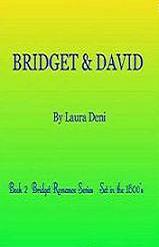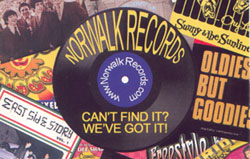 Broadway To Vegas
Broadway To Vegas

REVIEWS INTERVIEWS COMMENTARY NEWS
 |  |
LOSING MY MIND A SONDHEIM DISCO FEVER DREAM CD REVIEW - -SEMMELWEIS
- - MARLO THOMAS AND PHIL DONOHUE IN CONVERSATION WITH ROB REINER - - THE OREGON SHAKESPEARE FESTIVAL - -
CREATORS4COMICS - - LAUGHTER IS THE BEST MEDICINE PHYLLIS DILLER JOKES - -
SUPERB BAROQUE: ART IN GENOA, 1600–1750
- - CITIZENS RECREATE MUSEUM MASTERPIECES - - DONATE . . . Scroll Down
Copyright: May 3, 2020
By: Laura Deni
CLICK HERE FOR COMMENT SECTION
LOSING MY MIND A SONDHEIM DISCO FEVER DREAM IS AN ADDICTIVE COCKTAIL
Steven Sondheim is a creative genius who has given the world West Side Story (1957), Gypsy (1959), A Funny Thing Happened on the Way to the Forum (1962), Anyone Can Whistle (1964), Do I Hear a Waltz? (1965), Company (1970), and A Little Night Music (1973).
To take Sondheim creations and have the audacity to want to restructure them - into disco, no less - could be considered putting one's professional life on the line - with undercurrents of people thinking your a cross between crazy and a fool.
Unless you are Joshua Hinck and Scott Wasserman who not only think outside of the musical score but have the where-with-all to carry it off.
The Go Fund Me Losing My Mind: A Sondheim Disco Fever Dream has been released by Broadway Records.
Sondhein compositions lend themselves to dramatic interpretations and lush arrangements thus only rarely ever associated with disco in versions which had more to do with the artist - Lisa Minnelli and the Pet Shop Boys individual takes on Losing my Mind.
When you release something so avant-garde to coincide the the living composer's 90th birthday, no less, it has to be sensational.
It is - even elevating Sondhein and adding dimension to his famous creations.
The release also has an element of serendipity in that we are now social distancing and disco is a form of dancing which can be done solo.
Expect a mirror ball comeback.
This recording is disco with intelligence and class - not to be confused with radio DJ Steve Dahl's fronted ranti-disco campaign he called “Disco sucks”:
Disco music is a disease. I call it disco dystrophy . . . The people victimized by this killer disease walk around like zombies. We must do everything possible to stop the spread of this plague (Steve Dahl quoted in Brewster & Broughton 2006:290).
Dahl is also associated with the infamous “Disco Demolition Night” at baseball’s Comiskey Park in Chicago on July 12 1979, where reduced admission was offered in exchange for disco records that were in turn blown up inside a container partway through the game. The game had to be stopped caused by the riot that followed. Brewster and Broughton observe that this protest was in fact not unique:
Dislike for disco was everywhere. The rock generation saw it as the antithesis of all that was holy: no visible musicians, no ‘real’ stars, no ‘live’ performance. It was music based wholly on consumption, music with no aesthetic purpose, indeed with no purpose at all other than making your body twitch involuntarily. Dehumanizing, expressionless, content-less – the judgements were damning (ibid:291).
Following the incident in Chicago, disco clearly fell from grace, at least in the United States. The major record companies had forced dance music into a typical star performer-oriented package, and the public in turn experienced lip-synching, derivative arrangements, and other studio “fakery” as evidence of disco’s (rather than the disco business’s) illegitimacy. The major labels saw disco as a passing phenomenon that had to be “exploited as quickly and thoroughly as possible” (ibid:201). This fate would then become self-fulfilling.
Disco music reinvented itself, became house music (from the club the Warehouse in Chicago) and was exported to England. House parties and raves were (mostly illegal) gatherings of large crowds for dancing (and ecstacy) during weekend nights. Its popularity spread during the 1990s to become a major commercial scene at the turn of the millennium.
If we try to see these developments in perspective, there are many trends that imply a connection between music and dance and popularity. When the audiences move along to the rhythm and the groove, it seems to have an impact that connects them to the music. Likewise, there are stronger negative reactions towards dance music compared to other music. The bodily aspects of music can create passionate likings, but also strong aversions, and the orientation towards the pleasure of music seems provoking for many.
"Dislike for disco was everywhere. The rock generation saw it as the antithesis of all that was holy: no visible musicians, no ‘real’ stars, no ‘live’ performance. It was music based wholly on consumption, music with no aesthetic purpose, indeed with no purpose at all other than making your body twitch involuntarily. Dehumanizing, expressionless, content-less – the judgements were damning (ibid:291)."
Redeming disco is Losing My Mind A Sondheim Disco Fever Dream.
Joshua Hinck is a guy with LOTR goblets from Burger King and Hercules plate collection from McDonalds. He also knows how to sing. Scott Wasserman was A-Rab in a production of West Side Story in a middle school theatre camp production.
Wasserman is noted for his electronic music and took home the Grammy in 2016 for Best Musical Theater Album Hamilton and in 2018 for Dear Evan Hansen.
Both possess expert knowledge about how music and arrangements are constructed.
Conceived, produced, and arranged by Hinck and Wasserman, the recording is proof of their ability and knowledge of music's relationship to movement: pulse, accentuations, ritardando, attractors such as the bass drum in a dance music track working as an attractor; and entrainment which dates back to the 17th century when the Dutch mathematician and physicist Christiaan Huygens discovered that two pendulum clocks placed on the same surface always will end up moving in synchrony, in the same phase.
The human ability to synchronise to music is unique.
Especially dance music, an off-beat hi-hat (or similar high frequency sounds) very often corresponds to the peak position of an up-and-down movement. Both the guitar theme and the following vocals also have their highest note entry on the off-beat followed by a descending interval.
The tempo of a dance track is usually between 120 and 135 bpm. So 120 BPM means two bass drum sounds per second. Human movement studies have shown that we typically walk with the frequency of two steps per second, independent of gender, age, height, or weight. That is why this is often used in dance music.
This duo possesses serious musical knowledge.
The recording is a multi layered, beyond fabulous.
Daniel Schneck and Dorita Berger in The Music Effect: Music Physiology and Clinical Applications explain how rhythmic in music correspond with our muscular behavior. "Rhythmic pulsation embodies a consistent symmetrical balance of energy output, of fall and rebound, of tension and relaxation. Rhythmic vibration in music involves the same steady stream of force, rest, force, rest, of systematic strong and weak impulses of alternating flexion, release, and extension as in the case for paired and coupled muscular behaviour." So moving to the rhythmic pulse of music seems like a very human thing to do connected to how our muscles behave and to basic human abilities like walking, running, jumping, et cetera."
The object of this recording wasn't to keep people quietly seated and politely listening.
Move, baby.
The recording is infectiously effervescent.
The recording opens with the eerie, perhaps coming from a dream or another stratosphere Losing My Mind with Charity Angel Dawson and Joshua Hinck
is hypnotic leading into the revved up Opening Doors.
There Are Giants Somewhere keeps the beat going with every word easily understood. Brittnie Price shines in
Hello Pretty Lady / Lovely Moments by the Sea, which includes Somewhere. Segments imply the forbidden. The well thought out merging of Someheim creations is seamless. Your toes will tap.
Unworthy of Your Love from Assassins is a segment featuring Blaine Krauss and Alison Luff which offers lyrics which tease, while the ebullient tempo will keep your body moving. Vishal Vaidya, Onyie Nwachukwu, and Brittnie Price) riff at the end of this track.
Juwan Crawley and Deonté L. Warren offer a joyous Our Time from Merrily We Roll Along is inspiring.
The satin rendition of No One Is Alone by Charity Angél Dawson and Aneesa Folds, with Warren, provides a comforting yet still disco ballad. It's gentle and sensitive - the recordings only slower beat offering. That leads into The Miller's Son from A Little Night Music.
Artists Are Bizarre features Tick Tick, which was a dance sequence from Company. It's funky and demonstrates a perfect warp and and weft with the title song from Sunday in the Park with George; The Letter from Sweeney Todd, and Simple from Anyone Can Whistle.
Color and Light is intriguing with spoken key words. Track 11 Losing My Mind returns to the eerie before hitting the disco beat.
The buoyant mash ups include over 40 Sondheim songs in 12 tracks. Be they in combinations of two or eight - reflect and speak to each other in what is one of the most well thought out constructed albums ever offered to the public.
All of the artists have bell clear voices: Alison Luff, Blaine Krauss, Aneesa Folds, Charity Angél Dawson, Vishal Vaidya, Brittnie Price, Juwan Crawley, Deonté L. Warren, Joshua Hinck, Aili Venho, Onyie Nwachukwu, and Chip Zien.
The unrestrained closing track, Megamix: Take Me to the World is a fast paced 3 minute and 55 second summary of the record which will inspire you to play it again.
This unconventional recording is hypnotic.
Buy and enjoy.
ORCHESTRA:
Jay Julio - Violin: Josh Henderson - Violin: Joshua Hunton - Viola: Kyle Staisberg - Viola: Lydia Paulos - Cello: Ward Williams - Cello: Jami Dauber - Trumpet: Mark Miller - Trombone: Paul Staroba - piano: Hajime Yoshida - guitar: Andrew Grau - bass: Jeremy McDonald - Bass: Nicole Patrick - drums.
Vocal recording engineer Mario Vible. Orchestra recording engineer James Yost. Vocals recorded at Reservoir in NYC. Mixed at Will Hensley WAH Productions. Mastered by Joe Lambert at Joe Lambert Mastering. Creative and spectacular arrangements by Joshua Hinck and Scott Wasserman.
Tract Listing:
Opening (Doors)
There are Giants Somewhere
Hello Pretty Lady/Lovely Moments By the Sea
Unworthy of Your Love
Our Time
No One Is Alone
The Miller’s Son
Artists Are Bizarre
Color and Light
It’s Hot Up Here in this City on Fire
Losing My Mind
Megamix: Take Me to the World
E-Book
 |
Soft back Book
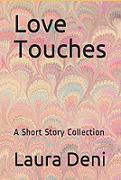 |
Broadway To Vegas is supported through advertising and donations. Priority consideration is given to interview suggestions, news,
press releases, etc from paid supporters. However, no paid supporters control, alter,
edit, or in any way manipulate
the content of this site. Your donation is appreciated.
We accept PAYPAL.
Thank you for your interest.
E-Book
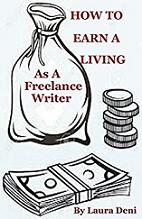 |
Soft back Book
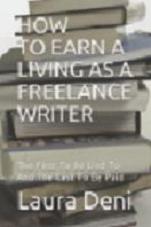 |
This is not your typical, totally boring textbook.
In the pages of How To Earn A Living As A Freelance Writer (the first to be lied to and the last to be paid)
you'll find sex, celebrities, violence, threats, unethical editors, scummy managers and lawyers,
treacherous press agents, sex discrimination; as well as a how-to for earning money by writing down words.
ART AND ABOUT
BEST COVID-19 PROJECT EVER!
Male Harp Player of the Early Spedos Type, 2700–2300 B.C. (left) and recreation with canister vacuum by Irena Ochódzka (right) Photo: J. Paul Getty Museum
 |
Last week, the J. Paul Getty Museum in Los Angeles sent out a tweet asking individuals self-isolating at home to recreate their favorite pieces of artwork with participants constructing their masterpieces using everyday household items.
This funny and ingenious at home project has resulted in hysterically funny results and it appears that all of the participants had a ball.
The Getty’s challenge was inspired by a similar online event - Tussen Kunst en Quarantaine (aka Between Art and Quarantine) - presented by the Rijksmuseum in Amsterdam earlier in April. The Pinchuk Art Centre in Kyiv, Ukraine, also challenged the art community to reproduce their fave art masterpieces by taking part in the #mystetstvovdoma or #artathome challenge.
So far, the Los Angeles museum has received thousands of submissions, no two the same.
Participants have used toilet paper, a vacuum cleaner, bubble wrap, socks, food, their pets, family members, themselves.
Recreations have include a version of the Louvre’s Winged Victory of Samothrace made with an energy drink and a ripped-up subway receipt and a remake of Dalí’s The Persistence of Memory featuring a peanut placed on a Brillo pad.
To help get people creating, the Getty posted a do-it-yourself guide on how to choose an artwork from the Getty's vast on line collection and then using 3 ingredients found around the house, orient a subject in the best light; and, finally, share on social media platforms like Twitter, Instagram and Facebook using the hashtags #betweenartandquarantine and #tussenkunstenquarataine.
SUPERB BAROQUE: ART IN GENOA, 1600–1750 Giovanni Benedetto Castiglione, The Adoration of the Shepherds, 1645, oil on canvas, Genova, Fondazione Spinola, Chiesa di San Luca, © Scala / Art Resource, NY
 |
by the 17th century, Genoa was the banking center of Europe with a functioning republican government and enormous wealth that enabled its artists and their patrons to create a singularly rich and beautiful expression of baroque style, with works of extraordinary material sumptuousness, visual splendor, and exuberant feeling. The first major presentation of the Genoese baroque in the United States, this landmark exhibition presents some 130 paintings, sculptures, decorative arts, drawings, and prints ranging from 1600 through 1750.
Forming the core of the exhibition are works by the school’s well-known painters—Bernardo Strozzi, Giovanni Benedetto Castiglione, and Alessandro Magnasco—as well as key works by other Italians and foreigners drawn to the city’s flourishing environment—Peter Paul Rubens, Giulio Cesare Procaccini, Orazio Gentileschi, Anthony van Dyck, and Francesco Solimena. Some of the very finest works by such native painters as Valerio Castello, Domenico Piola, and Gregorio De Ferrari are also on view. Monumental decorative ensembles from churches and residences are represented by corresponding oil sketches and presentation models, several grand in scale themselves. Also included are full-size statues by masters—Pierre Puget, Filippo Parodi, and Anton Maria Maragliano—terracotta sketches, and exquisite bronze repetitions of monumental groups, as well as spectacular ceremonial silver from early in the period.
Among the drawings and prints featured are many by the same artists who executed the paintings and objects, with some connected to them. These works reveal the striking characteristics of Genoese draftsmanship: complex techniques, pictorial elaboration, and autonomous function. In fantasy and fluency, the etchings—particularly those of Castiglione and Bartolomeo Biscaino—surpass those of any other Italian school.
The exhibition is curated by Jonathan Bober, Andrew W. Mellon Senior Curator of Prints and Drawings, National Gallery of Art; Piero Boccardo, Superintendent of the City Collections of Genoa; and Franco Boggero, director, historic and artistic heritage section, Soprintendenza Archeologia, Belle Arti e Paesaggio, Genoa.
The exhibition is organized by the National Gallery of Art, Washington, and the Scuderie del Quirinale, Rome, with special cooperation from the City and Museums of Genoa.
The exhibition was originally set to be on display May 3 - August 16, 2020 at the National Gallery of Art in Washington, DC.
Now the exhibition will be on display at the Scuderie del Quirinale, Rome, October 3, 2020–January 10, 2021.
E-Book
 |
Soft back Book
 |
SWEET CHARITY
CREATORS4COMICS announced that its five-day charity campaign raised $433,166 for the Book Industry Charitable Foundation (BINC) to support comic stores and indie bookstores hit hard by COVID-19. Started by a small group of creators, the charity auction quickly grew as comics creators, authors, and celebrity participants posted 635 auctions on Twitter and other platforms.
“Comic shops and indie bookstores have supported so many of us,” said Kami Garcia, #1 New York Times bestselling author of the graphic novel Teen Titans: Raven, who originally brought the organizers together. “They aren’t just places where we buy books and comics. These stores are places where we find belonging.”
With permission, #Creators4Comics borrowed the successful Twitter auction format used by #AuthorsForFireys to assist Australian firefighting efforts. The Twitter-based auctions included everything from signed comics to artwork to unique events like set-visits and zoom experiences. The auction effort was coordinated by Kami Garcia, Brian Michael Bendis, Gwenda Bond, Sam Humphries, and Phil Jimenez.
Among the participants were Frank Miller, Neil Gaiman, Patton Oswalt, Kelly Sue DeConnick, Joe Hill, Shannon Hale, Mike Mignola, Brad Meltzer, Mariko Tamaki, Scott Snyder, Greg Capullo, Marissa Meyer, Danielle Paige, Gene Luen Yang, Tom King, Bryan Edward Hill, Jason Aaron, Marc Guggenheim, Gail Simone, Vita Ayala, Bryan Lee O’Malley, Cassandra Clare, Marieke Nijkamp, Margaret Stohl, Jock, Mico Suayan, G. Willow Wilson, and hundreds of others. Lining up to make generous matching bids were Seth Meyers, Damon Lindeloff, and Robert Kirkman.
Since March 13, 135 comic retailers and their households have received over $150,950 in financial assistance for rent, food, and essential medications. This is more than double the amount distributed last year to this sector of the book industry. In total, 722 comic book stores have now applied for aid.
SPREADING THE WORD
SEMMELWEIS Co-Produced by Budapest Operetta Theatre & Bartók Plusz Opera Festival the music-theater work inspired by one of medicine’s most tragic heroes, Hungarian doctor Ignác Semmelweis, was created by American composer Raymond J. Lustig, Irish-American writer Matthew Doherty, and Hungarian director Martin Boross.
The world premiere performance in 2018 was co-produced by Budapest Operetta Theatre and Bartók Plusz Opera Festival. It will be free to watch, through May 31, 2020 but viewers may make donations via the website to support organizations currently working to understand and combat the global coronavirus pandemic, and to alleviate its toll, especially on the most vulnerable populations: UNICEF USA, Alight, and the Semmelweis Foundation.
The obstetrician Ignác Semmelweis – who championed the practice of handwashing in the 19th century that is the foundation of today’s antiseptic procedures – has had a resurgence of interest during the current coronavirus outbreak. Semmelweis was an “outsider,” a “foreign” doctor, Hungarian, but living and working in Vienna’s top hospital in a xenophobic era. Amidst a devastating epidemic in 1846, Dr. Semmelweis discovered that the deadly disease was being spread to healthy mothers by the unclean hands of their own doctors. Tragically, the medical community rebelled against Semmelweis’ discovery. They scoffed at his findings, rejected his theory, stripped him of his credentials, and the doctor was subsequently driven into an insane asylum where he died alone. It was not until decades later that his discovery was validated and accepted.
The production, featuring a cast of all women with the exception of Dr. Semmelweis, shines light on the role of women – from patients, to sex workers, to midwives, to Dr. Semmelweis’ own wife, Mária – and illuminates the cost to their bodies, lives, and families when powerful men prioritize the preservation of their own power over their duty to truth. Semmelweis explores what happens to a man whose conscience will not let him participate in a deadly and sexist status quo.
Google, which paid tribute to Semmelweis in its March 20, 2020 Google Doodle, reported, “Today, Semmelweis is widely remembered as ‘the father of infection control,’ credited with revolutionizing not just obstetrics, but the medical field itself, informing generations beyond his own that handwashing is one of the most effective ways to prevent the spread of diseases.” In response to the Doodle, the Wall Street Journal deemed Semmelweis “The Unsung Pioneer of Handwashing,” with CNN, Newsweek, The Washington Post, and Radiolab telling the doctor’s story as well in March 2020.
New York City-based composer Raymond Lustig has a background in science, and is a published researcher in molecular biology, with previous posts at Massachusetts General Hospital and Columbia University. Lustig’s wife, Dr. Ana Berlin, is a surgeon and palliative care specialist on the frontlines of the coronavirus pandemic at Columbia University Irving Medical Center.
Semmelweis' story is symbol-driven and tightly integrated with movement, staging, lighting, projection, and voiceover to convey the essential narrative outline. Semmelweis blends elements of song cycle, choral opera, pure-tone sacred vocal singing style, and pop and musical theater influences. The work is scored for women’s vocal ensemble, baritone soloist, and seven instrumentalists. Specially designed music boxes and tuned bells are played onstage by all soloists and chorus, and four dancers, choreographed by Anna Biczók, are interwoven with the singing cast.
MARLO THOMAS AND PHIL DONOHUE IN CONVERSATION WITH ROB REINER takes place Thursday, May 7 at 92Y in New York City.
To honor and celebrate their 40th wedding anniversary Marlo Thomas and Phil Donahue, in their first ever joint project, have created a book together, What Makes A Marriage Last: 40 Celebrated Couples Share With Us the Secret to a Happy Life.
During the past year Marlo and Phil traveled the country “double dating” with other couples they admire and found their stories both surprising and inspiring, hilarious and heartbreaking but always bracingly honest and always uncovering that unique combinations of work and play, give and take, and sometimes conflict too that have torn many couples apart but only tightened the relationships for these couples and much to their own surprise they ended up telling their own marital journey something they always were reluctant to do. They say it’s not a “how to” but a “what” book—a collection of deeply personal and insightful tales.
THE OREGON SHAKESPEARE FESTIVAL announced th launch of O!, a new interactive and immersive digital content platform designed to extend the artistry and creativity of the nation’s largest flagship repertory theatre to patrons, fans, and virtual communities all over the world. While O! will also serve as a connective bridge to OSF’s work in this moment of sheltering in place due to the COVID-19 pandemic, it is designed to become a foundational and ongoing part of OSF’s programmatic efforts.
O! can be accessed by all for free at www.osfashland.com/digital and offers fresh original content, thought-provoking discussions and presentations, as well as a treasure trove of fascinating videos and recordings from OSF’s archives.
THE NEW GROUP is launching a live online conversation series with the company’s noteworthy community of artists entitled, “Why We Do It.” The series commences on Wednesday, May 6 at 4:00PM EST with a conversation between Founding Artistic Director of The New Group, Scott Elliott and award-winning actor and director Cynthia Nixon. All conversations in the “Why We Do It” series are FREE and publicly available via Facebook Live and later archived on The New Group’s YouTube page.
Next in the series will be acclaimed actor Bobby Cannavale (May 13), Tony-winning Scenic Designer Derek McLane (May 20), award-winning actor Edie Falco (May 27), visionary writer and director Erica Schmidt (June 3), and boundary-breaking playwright Donja R. Love (June 10) with all conversations taking place at 4:00PM EST, moderated by Scott Elliott.
 |
 |
LAUGHTER IS THE BEST MEDICINE
Phyllis Diller (1917 – 2012) was a groundbreaking female comedian who was also a concert pianist. She dressed in outlandish outfits and her husband Fang was featured in many of her jokes. On a regular basis she starred in Las Vegas showrooms. She didn't begin her career until the age of 37.
The late stand-up comedian’s voluminous joke file, which contained 52,569 jokes, was donated to the Smithsonian’s National Museum of American History.
I've been asked to say a couple of words about my husband, Fang. How about short and cheap?
My husband, Fang, is so dumb I once said, "There’s a dead bird." He looked up.
I was the world's ugliest baby. When I was born, the doctor slapped everybody.
What I don't like about office Christmas parties is looking for a job the next day.
The best contraceptive for old people is nudity.
I admit, I have a tremendous sex drive. My boyfriend lives forty miles away.
The reason women don't play football is because 11 of them would never wear the same outfit in public.
My idea of exercise is a good brisk sit down.
I entered a beauty contest … not only did I come in last, I got 361 get-well cards.
The only people who don’t have to worry about viruses are the Los Angeles Dodgers. They haven’t caught anything in years.
E-Book
 |
Soft back Book
 |
E-Book
 |
Soft back Book
 |
This is not your typical, totally boring textbook.
In the pages of How To Earn A Living As A Freelance Writer (the first to be lied to and the last to be paid)
you'll find sex, celebrities, violence, threats, unethical editors, scummy managers and lawyers,
treacherous press agents, sex discrimination; as well as a how-to for earning money by writing down words.
FINAL OVATION
HAROLD REID founding member of the Grammy-winning country group the Statler Brothers, died Friday, April 24, 2020 at home in his hometown of Staunton, Virginia after a long battle with kidney failure. He was 80.
A bass singer, Reid was a member of the Country Music Hall of Fame and Gospel Music Hall of Fame.
The Statler Brothers began singing gospel music in 1948, later switching to country music after meeting country legend Johnny Cash and joining his roadshow.
From 1972 to 1977, they earned six consecutive CMA Vocal Group of the Year trophies, and went on to win that award three additional times. From 1965 through 1989, the Statlers reached the Billboard Top Ten with 32 hits, four of which went Number One.
He is survived by his wife Brenda Reid and their children Will Reid, Kim Reid Weller, and Karmen Reid. A brother also survives.
BERNIE ROTHMANEmmy award winning television writer died Wednesday, April 15, 2020 surrounded by family. He was 86.
A graduate of McGill University in his hometown of Montreal, Canada, Bernie enjoyed a successful career, spanning five decades, as a television writer and producer, winning multiple Emmy, Gemini, and Christopher Awards.
He authored a book Hollywood and Me: My Wild Ride Through the Golden Age of Televsion
Rothman wrote popular, classic TV shows like My Three Sons and produced career-defining specials for stars like Judy Garland, George Burns, Diana Ross, Burt Reynolds, and Rudolf Nureyev. In his memoir, Rothman describes his dealings with male and female divas, from witnessing Peggy Lee trashing the Andrews Sisters to dragging Nureyev out of the bathtub minutes before airtime.
He started off in theater in Montreal, moved to Toronto to work in live television with Norman Jewison and eventually moved to LA. Along the way he worked on classic comedy series, worked with legendary performers like Julie Andrews, Judy Garland, George Burns, Peggy Lee, Red Skleton, Danny Kaye, Diana Ross,Dean Martin (sort of) Shari Lewis and Lamchop and many, many others.
He wa preceded in death by his wife Barbara Rothman. He is survived by his children, stepchildren and grandchildren.
Next Column: May 10, 2020
Copyright: May 3, 2020 All Rights Reserved. Reviews, Interviews, Commentary,
Photographs or Graphics from any Broadway To Vegas (TM) columns may not be published,
broadcast, rewritten,
utilized as leads, or used in any manner without permission,
compensation
and/or credit.
Link to Main Page




 Broadway To Vegas
Broadway To Vegas







